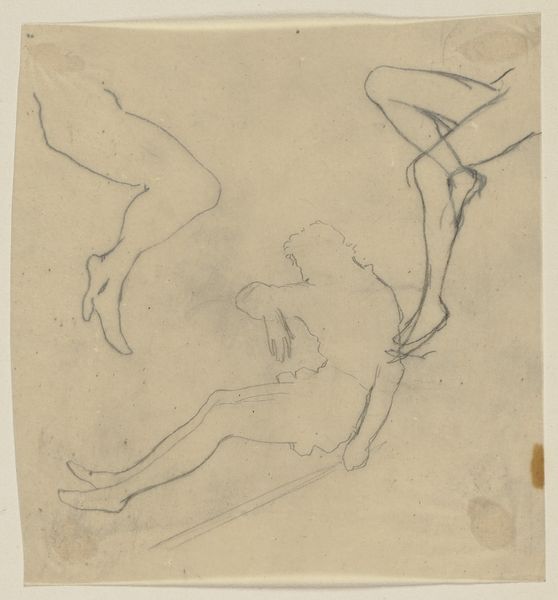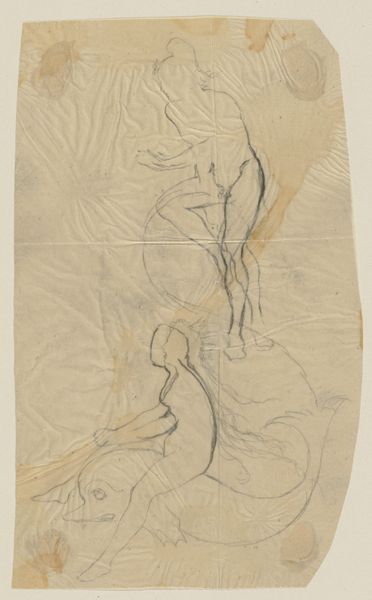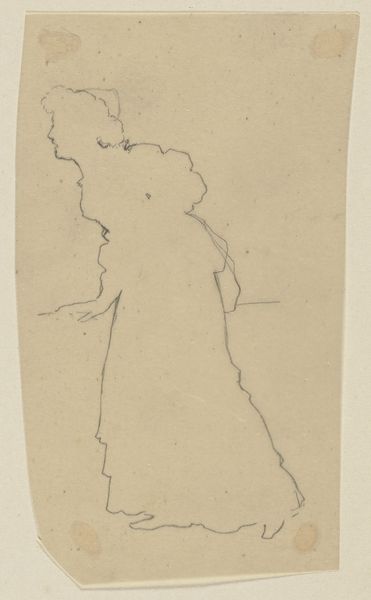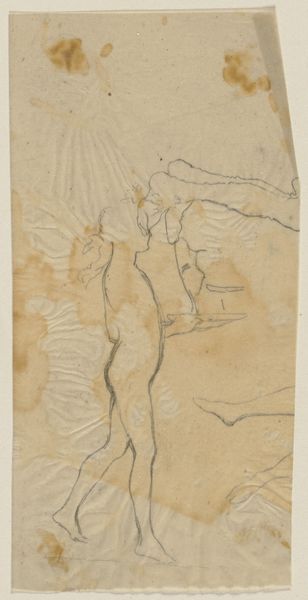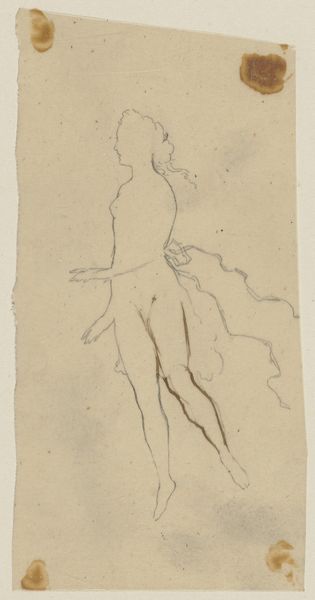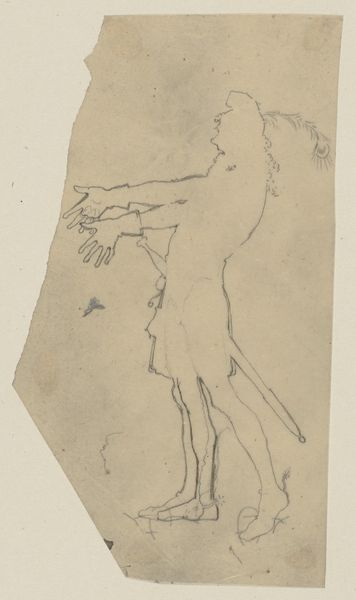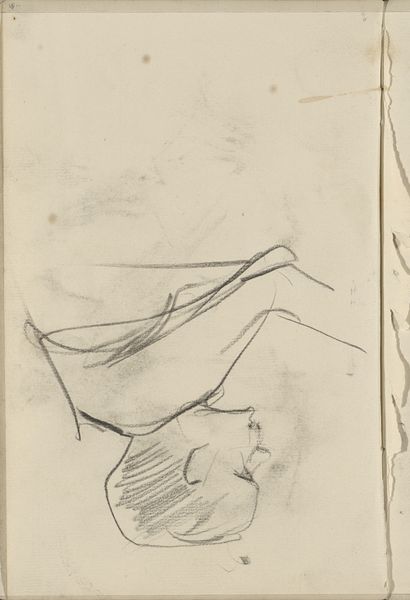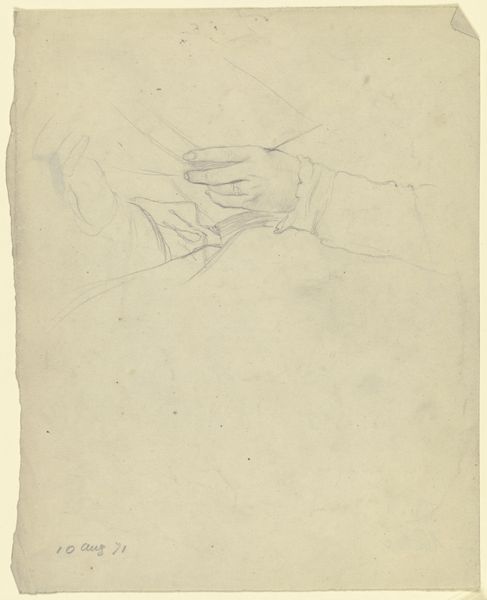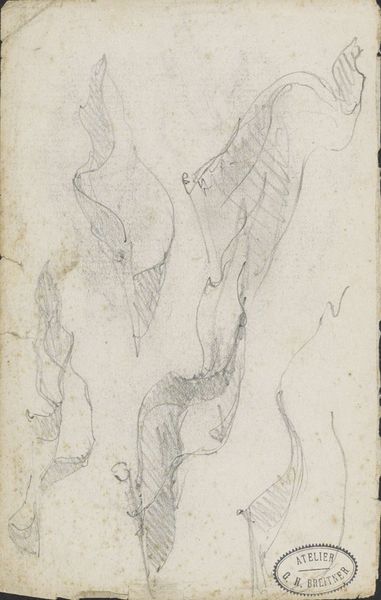
Schlafender Lysander nach links und nach rechts sowie Puck mit der Zauberblume c. 1867 - 1868
0:00
0:00
Copyright: Public Domain
Curator: Looking at this pencil drawing by Paul Konewka, crafted around 1867-1868, which is currently held in the Städel Museum, I'm immediately struck by the delicacy of the lines. It feels dreamlike. What’s your initial take? Editor: A fragile dance seems to occur, I see male figures intertwined, floating almost, and some semblance of the cupid figure. The ethereal rendering makes them appear vulnerable, almost caught between worlds. Curator: Indeed, this artwork, titled “Schlafender Lysander nach links und nach rechts sowie Puck mit der Zauberblume,” is fascinating in how Konewka navigates Romantic themes. Consider the institutional forces that were influencing artists like him during that era; galleries prioritized sentimental narratives drawn from literature, and artists rose to meet the demand. Editor: But isn’t that very performance itself something we must address? The male form is aestheticized, but to what end? In looking closer at Konewka, it must be recognized he later made racist caricatures. Curator: Yes, it's crucial to remember that art exists within—and contributes to—larger social and political structures. It is our duty as interpreters to highlight any work's social consequences or harmful impacts on groups. Editor: Looking at the wispy pencil strokes makes the subject almost dissolve into the background. How intentional do you think this ambiguity was in commenting on Victorian morality? Curator: The very vagueness could function as a protective measure, softening possibly shocking ideas to adhere to the standards expected of its viewers. It demonstrates the complexities faced by artists aiming for individual expression and simultaneously adhering to society norms. Editor: Seeing the piece reminds me of the continuous renegotiation of identity in the face of historical context, with many layers of interpretation always at play, each layer refracting light on societal norms of a certain moment. It helps to critically assess the underlying principles and biases shaping not only artistic creation, but also its perception. Curator: Indeed, artworks are a mirror of the period from which they come, which is why it's critical that we recognize, interrogate, and examine the institutional apparatuses that gave rise to art, artists, and culture. Editor: Thank you. This framework not only illuminates the past but equips us to be ever present within cultural analysis.
Comments
No comments
Be the first to comment and join the conversation on the ultimate creative platform.
